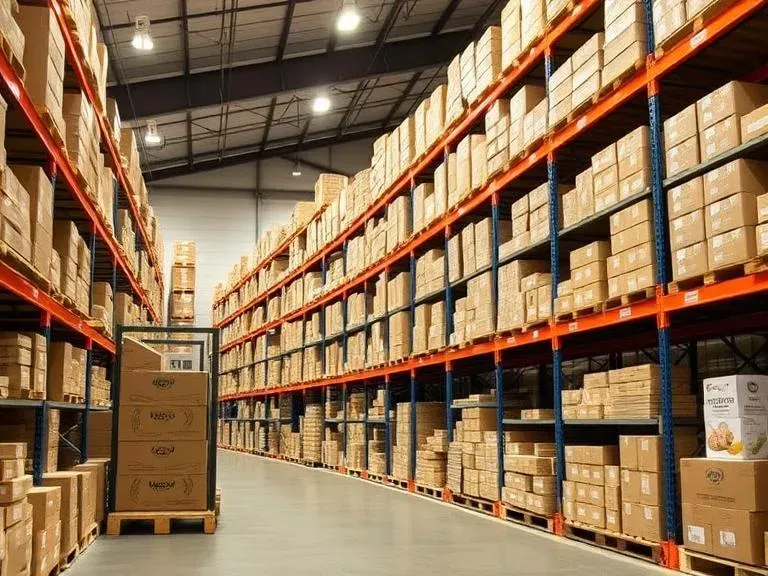Efficient inventory management is fundamental to the success of any company that handles physical products. Inadequate control can result in excessive costs, lost sales, customer dissatisfaction, and, ultimately, a decrease in profitability. Odoo Inventory presents itself as a comprehensive solution to address these challenges, offering complete visibility and precise control over inventory in real time. This article is aimed at operations managers, logistics managers, and companies looking to optimize their supply chain through robust and adaptable inventory management.
What is Odoo Inventory?
The Odoo Inventory module is an application within the Odoo Enterprise suite, designed to manage all aspects related to a company’s product stock. It is not an isolated tool; its true strength lies in its seamless integration with other key Odoo modules, such as Purchase, Sales, Invoicing, Manufacturing, and Accounting. This integration eliminates information silos and provides a unified view of the entire business operation.
Essentially, Odoo Inventory allows you to:
- Accurate stock tracking: Know in real time the quantity of each product available in each location.
- Management of multiple warehouses: Manage inventories distributed across different physical locations.
- Process automation: Optimize tasks such as replenishment, goods receipt, and order preparation.
- Complete traceability: Track the history of each product, from purchase to sale, including stock movements, lot numbers, and expiration dates.
- Accurate inventory valuation: Calculate the cost of inventory using different methods (FIFO, LIFO, Weighted Average Cost).
Integration with Other Odoo Modules
The ability of the Odoo Inventory module to integrate with other applications is crucial. Let's see how this interconnection works:
- Purchase: When a purchase order is created in the Purchase module, the associated stock is automatically reserved. When the products are received, the stock entry is registered directly in Inventory, updating the available quantities.
- Sales: When a sale is confirmed, the system verifies the availability of stock. If there is enough, it is automatically reserved. When the order is shipped, a delivery slip (picking list) is generated that guides the preparation process and the stock is deducted.
- Invoicing: The creation of an invoice is directly linked to the delivery slip. This ensures that invoicing reflects the stock actually delivered to the customer.
- Manufacturing: If the company produces its own products, the Manufacturing module uses Inventory to manage the necessary raw materials and record finished products once manufactured. Work-in-progress inventory is also managed within this flow.
- Accounting: The Accounting module is automatically updated with inventory movements, facilitating the preparation of accurate and compliant financial reports.
This integration eliminates the need to manually enter data into multiple systems, reducing errors and improving efficiency.
Key Features of Odoo Inventory
Management of Incomings and Outgoings
Odoo Inventory simplifies the recording of stock inflows and outflows:
- Goods Receipt: Allows you to record stock inputs through receiving slips, specifying quantities, lots, expiration dates (if applicable) and storage location.
- Goods Dispatch: Outgoing stock is managed through delivery slips, associated with sales orders. This includes confirming order preparation and updating inventory.
- Inventory Adjustments: Allows you to correct discrepancies in stock due to losses, damage, theft, or counting errors. These adjustments can be approved and audited to ensure accuracy.
Internal Transfers
For companies with multiple warehouses, Odoo Inventory facilitates stock transfers between locations:
- Creating Transfers: Internal transfers can be created to move products from one warehouse to another.
- Tracking Status: The system tracks the status of the transfer (pending, in progress, completed).
- Route Optimization: Odoo can suggest optimal routes for transfers, minimizing transport times and costs.
Multiple Locations
Managing locations is a fundamental component of Odoo Inventory. It allows you to:
- Define Hierarchical Structures: Create a hierarchical structure of warehouses, locations, and sublocations (e.g., Main Warehouse > Shelf A > Level 1).
- Stock Management by Location: View the stock available in each specific location.
- Optimize Distribution: Analyze the performance of each location and optimize stock distribution to reduce order preparation times.
Product Traceability
Traceability is essential to ensure quality, safety, and regulatory compliance. Odoo Inventory offers:
- Lot and Serial Numbers: Allows you to track products by lot number or serial number, which is crucial for managing returns, product recalls, and identifying quality issues.
- Expiration Dates: Manages the expiration dates of perishable products, ensuring that the oldest products are used first (FIFO).
- Movement History: Shows the complete history of movements for each product, including inputs, outputs, transfers, and adjustments.
Practical Example: Electronics Distribution Warehouse
Consider an electronics distribution warehouse using Odoo Inventory. The company receives electronic components from various suppliers, stores them, and sends them to electronic device manufacturers.
- Receipt: Components from a supplier arrive at the warehouse and are recorded in Odoo Inventory using receiving slips. Quantities, lot numbers, and expiration dates (if applicable) are specified.
- Storage: The components are located on different shelves and locations within the warehouse, according to their type and volume.
- Manufacturer Order: A manufacturer places an order for specific components.
- Order Preparation: Odoo Inventory generates a delivery slip, which guides warehouse operators to pick the necessary components. The system uses the most efficient location to optimize the process.
- Shipping: Once the order is prepared, the shipment is issued and the stock is automatically deducted from inventory.
- Traceability: If the manufacturer identifies a quality problem with a specific lot of components, they can use the traceability function of Odoo Inventory to track the origin of the problem and take corrective action.
This example demonstrates how Odoo Inventory can optimize warehouse operations, improve inventory accuracy, and ensure product traceability.
Automation and Optimization
Odoo Inventory offers various functionalities to automate processes and optimize stock management.
- Replenishment Rules: Replenishment rules can be defined to ensure that stock never runs out. These rules can be based on minimum and maximum quantities, reorder points, or demand forecasts.
- Delivery Routes: Odoo can optimize delivery routes to minimize transport times and associated costs.
- Virtual Stock Management: Allows you to manage virtual stock, i.e., stock reserved for pending orders.
- Alerts and Notifications: Alerts can be configured to notify those responsible when the stock of a product reaches a critical level or when discrepancies occur in inventory.
Comparison with Other Solutions
Although there are other inventory management solutions on the market, Odoo offers a unique combination of features, integration, and flexibility. Here's a brief comparison with some alternatives:
| Feature | Odoo Inventory | SAP Business One | TradeGecko (now Quickbooks Commerce) | Zoho Inventory |
|---|---|---|---|---|
| Integration | Excellent (with other Odoo modules) | Good (requires customization) | Limited | Good (within Zoho) |
| Pricing | Modular, scalable | High | Medium-High | Medium |
| Flexibility | High | Medium | Medium | Medium |
| Traceability | Complete | Good | Medium | Medium |
| Automation | High | Medium | Medium | Medium |
| Multi-warehouse Management | Excellent | Good | Good | Good |
- SAP Business One: It is a complete solution for businesses, but it can be expensive and complex to implement and maintain. Its integration with other applications may require significant customization.
- TradeGecko (now Quickbooks Commerce): It is a solution specializing in e-commerce, but its integration with other systems may be limited.
- Zoho Inventory: It is an affordable and easy-to-use option, but its functionality may be limited compared to Odoo.
Odoo Inventory stands out for its flexibility, scalability and its seamless integration with other Odoo modules, making it an ideal option for businesses of all sizes and sectors.
Take Control of Your Stock
Odoo Inventory offers a comprehensive solution to optimize your inventory management, reduce costs, improve efficiency, and increase customer satisfaction. If you are looking for a solution that adapts to the specific needs of your company, integrates seamlessly with your other systems, and provides you with complete visibility of your stock in real time, consider implementing the Odoo solution. Improve your supply chain management and prepare for sustainable growth. Start evaluating the transformation you can achieve in your operations.






